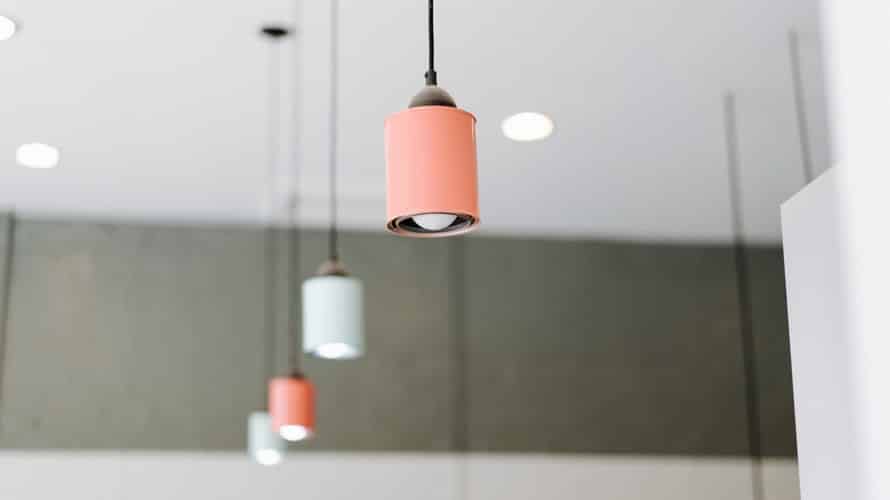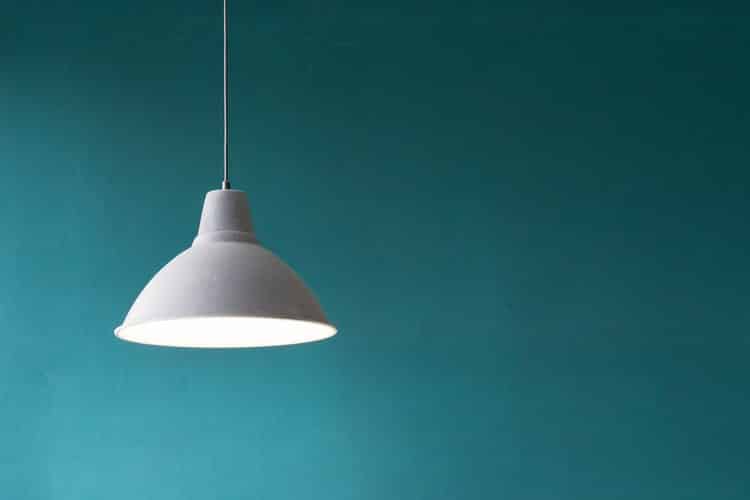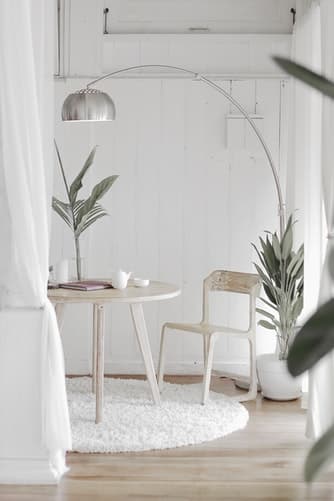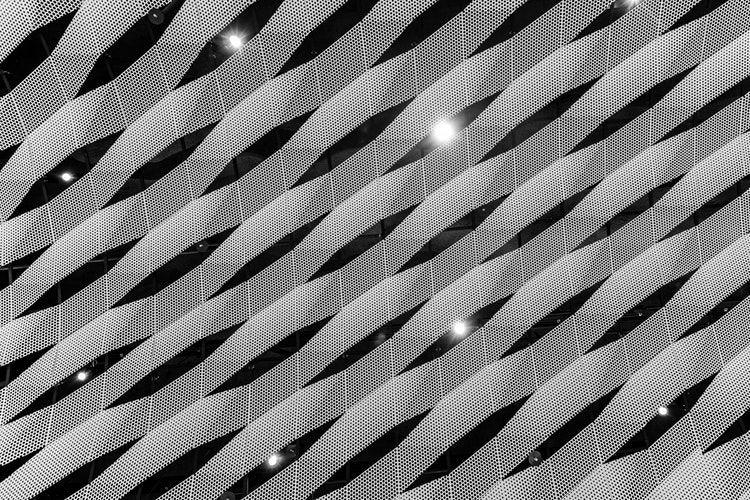When we think ‘LED’, we see blinding light at the end of the tunnel which might have nothing to do with a train coming. But, it is nevertheless crazy enough to burn your eyeballs into the sockets.
Well, LEDs have had quite the rep of being these bright lights that lit up the entire room with an odd blue tinge to it, and kind of changed the appearance of anything it fell on.
But now, technology has flipped the game for these shiners, yet again.
Modern LED lights are way more stylish and can be used to light up practically anything from huge living spaces to even a tiny tweezer for precision in usage!
But the best thing about using LEDs is that these lights use up only a fraction of the amount of energy compared to traditional incandescents. So, even if you want to keep the lights on all night, it wouldn’t really pile up on your electricity bills.
The benefits of going LED ceiling lights are several if you know how to use them.
But before talking about the advantages of using these products, you need to understand what LED lights are exactly.
Benefits of Choosing LED for Your Ceiling Light

Image via Yiran Ding@yiranding
What are LED lights?
LED stands for ‘light-emitting diodes’ and these are a form of Solid State Lighting or SSL that is long-lasting and power-efficient. These lights operate on semiconductor technology.
These consists of two types of semiconductors namely the ‘n’ and ‘p’ type conductors. When a given unit of current is applied to it, the electrons speed from one semiconductor to the other.
When an electron occupies a “hole” that was previously engaged by another electron, it releases energy in the form of photons during the process which is the ‘light’ that is emitted as a result. This is known as electroluminescence.
Compared to regular incandescent and fluorescent lights that contain filaments or gases inside glass bulbs and tubes, LEDs have small capsules or lenses containing tiny chips placed on heat-conducting materials.
You can either go for the Integrated LED device that has the diode built into the system and takes the shape of the device. This evenly distributed the light that is emitted. The only drawback is you cannot change the LED bit separately from the device. You can also go for Separate LED devices that can be disassembled.

Image via Ricardo Gomez Angel@ripato
Can the brightness of LEDs be controlled?
Now, this has been a relevant issue with LEDs since its launch. Previously, there were almost no way to cut down on the brightness of these diodes. As a result, it was difficult to use these lights for specific purposes that required softer lighting, such as the lightings in bathrooms or bedrooms.
But, newer mechanisms and advanced technology have made sure that there is no room left to complain even regarding this issue.
Nowadays, you can get LEDs that give off much subtle glows.These are not as harsh to the eyes as commercial and conventional lighting. They make for excellent ceiling lights.
You can now easily get your LED lights that come with a standard dimmer in almost every shop anywhere. Make sure that the LED lights that you are going for are compatible with the dimmer switch that you have thought of installing with it.
So now that you know pretty much about what you’re going to fit into your ceilings next, let us get to the numerous benefits of going LED for your ceiling lights.

Image via McDobbie Hu@hjx518756
-
Energy Efficiency
LED lights are the most energy efficient source of illumination for your home. Compared to traditional lighting, LEDs are 80%-90% higher up in its energy efficiency. This means that almost 80% of electrical energy is converted into light, while a mere 20% is converted into other energy forms like heat.
The statistics are just the reverse in the case of regular light bulbs and fluorescent lights which take up about 80% power that is converted to heat and only 20% produces the light that we get. You can replace an 84 watts fluorescent light with a 34 watts LED and still get the same level of light. The consumption of lesser energy reduces the need for power plants, decreasing greenhouse gas emissions.
So, calculatively, say, if you’re using traditional lighting and having to pay US$100 on electricity bills, then US$80 from that goes into heating the room alone without lighting functions. But if you install LEDs, having an 80% power efficiency, you’d only have to pay $20 and save around $80 altogether!

-
Product Longevity
LEDs have considerably longer lifespans than traditional lights. This also means lower carbon emissions. These lights last upto six times longer than regular ones and doesn’t need to be replaced frequently.
The lifetimes for LEDs are significantly different that those of conventional bulbs which go out when the filament snaps. The average lifetime for LEDs for the number of efficient hours it offers, is about 70% of initial brightness. They eventually fade out by the end of this time.
Compared to an incandescent bulb that has a efficacy of 750 to 2000 hours, 8000 to 10000 for a compact fluorescent and 20,000-30,000 hours for a linear fluorescent bulb, the span of a high-power white LED stands at around 35000 to 50000 efficient hours.
These lights have been known to have a life-time of upto 100,000 hours, that is actually more that 11 years. However, this figure is greatly depending on factors like temperature and operating current. LEDs do degrade over time eventually.
Hence, LEDs greatly reduces the pressure on lighting requirements in fields like industrial manufacturing and packing processes and transportation.

Image via David van Dijk@dvandijk
-
Lower Temperatures and Heat Production
Regular incandescent light bulbs waste around 80%-90% of the total energy as heat. LEDs , in comparison, remain cool and since they do not consist of glass components, do not run the risk of getting damaged due to vibration or temperature fluctuations.
Thus, you can easily install these lights in ceilings of your kitchen or other rooms where the temperature remains a bit on the higher end. These can also be installed at places like outdoor sports facilities.
Another crucial factor about LED lights are that they do not produce heat in the form of infrared radiations unlike incandescent lighting or ultraviolet radiations. This allows us to install these lights at places where heating from regular lighting would have caused a problem, such as in lighting up a space containing light-sensitive objects like food or textile.

Image via Pierre Châtel-Innocenti@chatelp
-
Size and weight
LEDs typically measure around 3-8mm in length and can be used singularly or in an assemblage for display. The miniature size and low profiles of LEDs make them fit in constricted places that cannot accommodate conventional light bulbs (remember the tweezer I wrote about?).
Also, because of directional facilities, LEDs serve efficiently in even distribution of light than any regular lighting.
These lights are equally light weight. They can be easily fixed and installed anywhere in the house and do not need to be secured in the ceiling joists or wall studs with heavy duty fixtures to hold them into place. You can go for elegantly hanging LED orb pendants or the timeless chandelier in your living space that will light up all occasions under the roof.

Image via Atilla Taskiran@atilla
-
Aesthetics and overall design finish
LEDs can look stunningly beautiful with almost every room decor and interior design. Nowadays, the lighting of LEDs can be maneuvered a lot more successfully (specially with dimmers) than how it had been when it was first launched.
One of the best things about these lights is that they create an illusion of more space, blurring the sharp boundaries of the room with their subtle glow. When installed into the ceiling, the lighting could make the ceiling appear higher and the room to be more spacious.
And, nowadays, you can find any model of LED pendants or soft chandeliers to match your room decor and add the extra depth to its style. You can choose to have subtle ambient lighting or spot lighting with these diodes according to your needs. This is something that you won’t get in regular bulbs.
Also, there is simply no lack of shapes, sizes or designs when it comes to LEDs. Go for spun metal set pendants or regular orbs for ceilings of any room. Or bring in the playfulness with scattered wreaths of beautiful fairylights.
You can also get to have the benefit of Ambient Light Sensing (ALS) in certain LEDs models that detects the amount of light required by a particular space or area and dims or brightens up the intensity accordingly. These do not cost very much. It can also detect the colour of the ambient light, allowing colour tuning of RGB-type LED lighting system.
So, you can do away with the boring looking conventional lights and replace them with these beauties which could bring in a complete makeover for your living space after the sun goes down.
-
Ecologically Safe
This has to be one of the most praiseworthy things about LEDs that they do not contain any toxic elements or metals such as mercury that can potentially harm the environment.
Conventional lightings such as fluorescent strip lights contain harmful chemicals and metals like mercury that contaminate the environment when disposed off in pits or landfills.
These noxious materials always need to be disposed off through a registered waste carrier and this is why going LED will save you the hassle and cost of such elaborate measures and protect the environment from being subjected to further chemical damage.
LEDs are also 100% recyclable and helps reduce your ‘carbon footprint’ on the biosphere. The lifespan of one LED light bulb can reduce the usage of material and manufacturing of about 25 incandescent light bulbs. This is a big step towards environmental conservation.
LEDs also has significant effect on the mood where softer lights help to relieve tension and stress. This is one of the reasons health facilities have greatly switched over to LEDs, doing away with harsh conventional incandescents.

Image via Kirill Zakharov@kirillz
-
Durability
LEDs are sturdy and durable lighting components that can withstand rough conditions. These are shock resistant that make them immune to external impacts and vibrations.
Not only can you install these units within the house but you can also put them up in ceilings of open and free spaces such as the balconies, patios or outdoor sitting areas.
These do not usually get damaged by inclement weather conditions such as wind or rain. LEDs operate ideally even in warm or very cold temperatures such as in freezer rooms. These are resistant to any fluctuations in temperatures that can damage regular light bulbs.
-
Light dispersing and color tuning
LEDs can be made to direct its rays to any specific location without the aid of any external reflector. This achieves a greater application efficiency and even light distribution than any other conventional light source.
LEDs offer you a broad range of brilliantly saturated colours. Devices having multi-colored LEDs can be tuned to a wide range of colours and can be easily dimmed.
RGB modules offer a much greater range of colours than traditional or white light resources. This comes in quite handy for backlighting LED purposes.
However, LED colour tuning performance varies across the spectrum and depends on factors like temperatures and current.
-
Instant Lighting and frequent switching
LEDs do not lag or flicker when you switch them on. These immediately power up instantly and thus can be installed in important parts of the house like the closets and basements (where there are more chances of getting spooked), or even used for infrastructure projects like traffic signal lights.
These lights can also be flicked on and off a number of times frequently without any circuit damage being caused.

Image via Hutomo Abrianto@hutomoabrianto
-
Can be worked with low-voltage power supply
LEDs can efficiently run on low voltage power supply. Even an external solar power supply can be easily used to work these lights. This is a huge benefit when it comes to lighting requirements in remote or rural destinations.
Conclusion
All in all, switching from conventional incandescents to LEDs for ceiling lights or even for other purposes could be one of the best decisions that you ever make for your home.
This is particularly because the benefits of going LED is not restricted to a personal level but it also significantly contributes to the well-being of society and environment as a whole.



